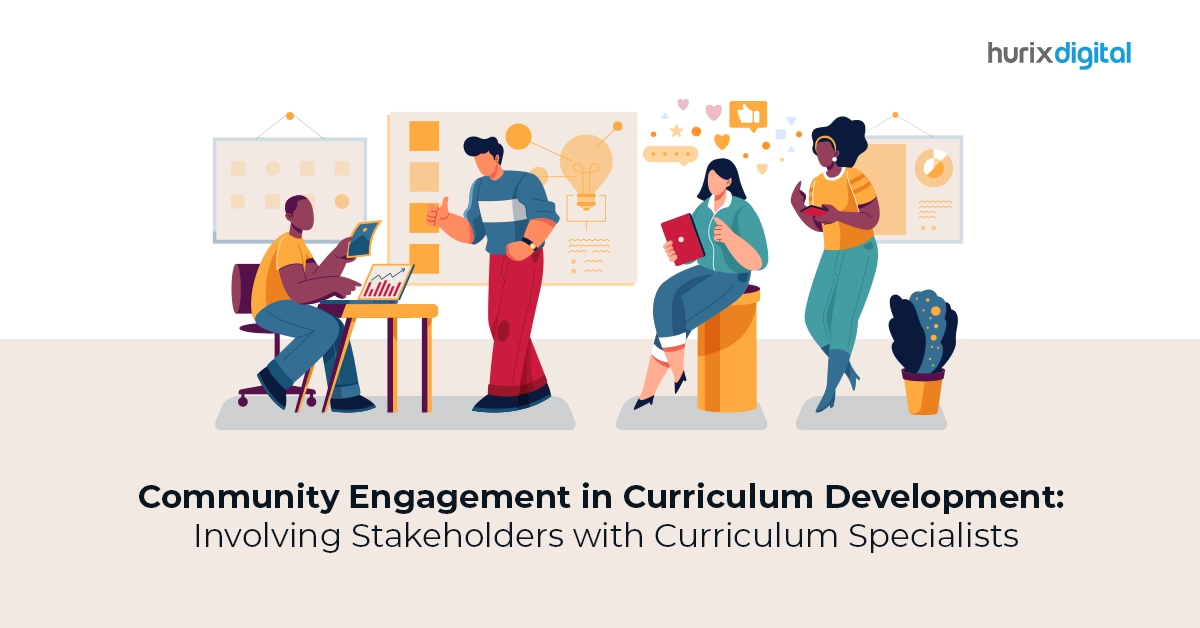Community Engagement in Curriculum Development: Involving Stakeholders with Curriculum Specialists
In the realm of education, curriculum development stands as a cornerstone for shaping the learning experiences of students and mentoring their academic journey. The task of curating a curriculum that is both effective and relevant requires more than just the expertise of curriculum specialists; it also involves the involvement of stakeholders.
Stakeholders who are teachers, parents, administrators, and community members have a vested influence in the educational process and bring a unique perspective and insights that are integral to the development of the curriculum.
It was established that stakeholder involvement in curriculum implementation explained 71.1% of the variance in successful curriculum development.
Table of Contents:
- Understanding the Landscape of Curriculum Development
- Why is it Important to Involve Stakeholders in Curriculum Development?
- Step-by-Step Guide to Effectively Involve Stakeholders in Curriculum Development
- Final Thoughts
Understanding the Landscape of Curriculum Development
Curriculum development is a multifaceted process crucial for educators and stakeholders, guiding the creation of efficient educational programs. It is initiated by defining the purpose and educational philosophy followed by setting clear objectives which are aligned with the goals.
With a systematic approach, curriculum development cultivates enriching experiences and equips students with the skills and knowledge needed for success.
Also Read: The Key Principles of Effective Curriculum Development
Why is it Important to Involve Stakeholders in Curriculum Development?
The importance of involving stakeholders in curriculum development cannot be overstated. Listed below are several key reasons as to why it is crucial:
1. Relevance
Community members which consist of stakeholders, students, and parents offer unique perspectives on what is relevant and important in the curriculum. Involving them ensures that the curriculum addresses real-world problems and also meets the needs of the learners of the community.
2. Ownership
When stakeholders are involved in the curriculum development process, they feel a sense of ownership and investment in the educational program. This sense of ownership makes them more likely to engage in the development process and support its implementation.
A sense of ownership can be cultivated through meaningful opportunities for participation in workshops, focus groups, and decision-making roles. This leads to greater buy-in from all the parties involved such as students, parents, teachers, and administrators.
3. Cultural Responsiveness
About the unique cultural backgrounds of different communities, involving stakeholders ensures that the curriculum is culturally inclusive and responsive, promoting equity and diversity in education.
4. Boosts Engagement
Engaging stakeholders in curriculum development fosters a sense of collaboration and partnership between schools, families, and the broader community. This boosts all stakeholders’ engagement in education, resulting in improved student outcomes.
5. Improvement in Quality
The inputs given by stakeholders provide valuable insights into the areas of improvement of the curriculum such as outdated content, gaps in learning opportunities, and ineffective teaching strategies. By evaluating their feedback, curriculum specialists can enhance the quality and effectiveness of the educational program.
6. Alignment With Goals and Values
The involvement of stakeholders ensures that the curriculum aligns with the goals, values, and priorities of the educational institution. This creates a shared vision for education and promotes consistency in curriculum implementation.
Step-by-Step Guide to Effectively Involve Stakeholders in Curriculum Development
Community engagement in curriculum development is a crucial aspect of creating educational programs that meet the diverse needs of the learners of the community. Involving stakeholders which include parents, students, educators, and community members alongside curriculum specialists can lead to more relevant, inclusive, and effective curriculum designs.
The following is a step-by-step breakdown of how to effectively involve stakeholders in curriculum development:
Step 1 – Identify Stakeholders and Scope
Before inviting the community members to participate in curriculum design, having a clear and shared vision of the purpose and scope of the project is paramount. Understanding the learning objectives, outcomes, standards, and competencies that are to be achieved is a crucial step.
The next step in curriculum development would be identifying the key stakeholders who will be impacted by the curriculum including students, parents, school administrators, teachers, community leaders, and other relevant professionals.
Step 2 – Establish Communication Channels
Create effective communication channels to engage stakeholders throughout the curriculum development process. These communication channels include in-person meetings, surveys, focus groups, emails, workshops, and more.
By utilizing the communication of these channels, curriculum developers can reach a wide range of stakeholders and accommodate diverse preferences and needs. This fosters a meaningful engagement throughout the curriculum development process.
Step 3 – Establish and Maintain Relationships
One of the most important aspects of involving community members in curriculum design is establishing and maintaining meaningful relationships with them. Acknowledging and appreciating their expertise, knowledge, and contributions is an effective way for community engagement.
Communicating frequently and transparently providing feedback, updates, and support can ensure a healthy and fruitful relationship among the community members.
Step 4 – Collaborative Workshops and Meetings
Organizing collaborative workshops and meetings can allow the stakeholders to work together with curriculum specialists to brainstorm ideas, review draft materials, and provide input on curriculum goals, objectives, content, and instructional strategies.
By fostering collaboration, creativity, and shared ownership, collaborative workshops and meetings empower stakeholders to contribute meaningfully to the development of a curriculum that meets the diverse needs of learners and the community.
Step 5 – Provide Professional Development Training
Offering professional development opportunities for stakeholders, which includes teachers and administrators, to enhance their understanding of curriculum practices and principles. It also equips them with the necessary skills, knowledge, and expertise to actively contribute to the curriculum development process.
These programs offer opportunities for continuous growth which enables the stakeholders to stay updated on emerging trends, research findings, and best practices in education.
Step 6 – Testing and Evaluation
Testing the curriculum with a diverse group of stakeholders to gather feedback on its implementation and effectiveness can do wonders for your curriculum development. Analyzing and synthesizing the data and information collected from the community members and identifying the themes, patterns, and gaps that emerge can help in designing the curriculum according to their perspectives, experiences, and concerns.
The next step here would be to compare and contrast the feedback received from the community members with other sources of research, standards, and best practices. Using this feedback, revisions can be made in the curriculum development process.
Check out EXCLUSIVE: Hurix Minibook: The Paradigm Shift in Higher Education with Curriculum Development
Final Thoughts
Understanding curriculum development is essential for creating educational programs that effectively meet the needs of students and the broader community. By involving stakeholders such as parents, students, educators, administrators, and community members alongside curriculum specialists, we ensure that diverse perspectives are considered, leading to more relevant, inclusive, and effective curricula.
Curriculum development can be a hassle without the right tools, and that is where Hurix Digital steps in. It provides the most comprehensive curriculum design solutions to curate an effective curriculum and involvement of stakeholders.
Contact us to know more!

Senior Vice President
A Business Development professional with >20 years of experience with strong capability to sell new solutions and develop new markets from scratch. New Market Entry Specialist with experience working in the largest emerging markets. Exceptional experience in conceptualizing, ideating and selling new learning technologies like VR AR, etc. across multiple industry verticals.









